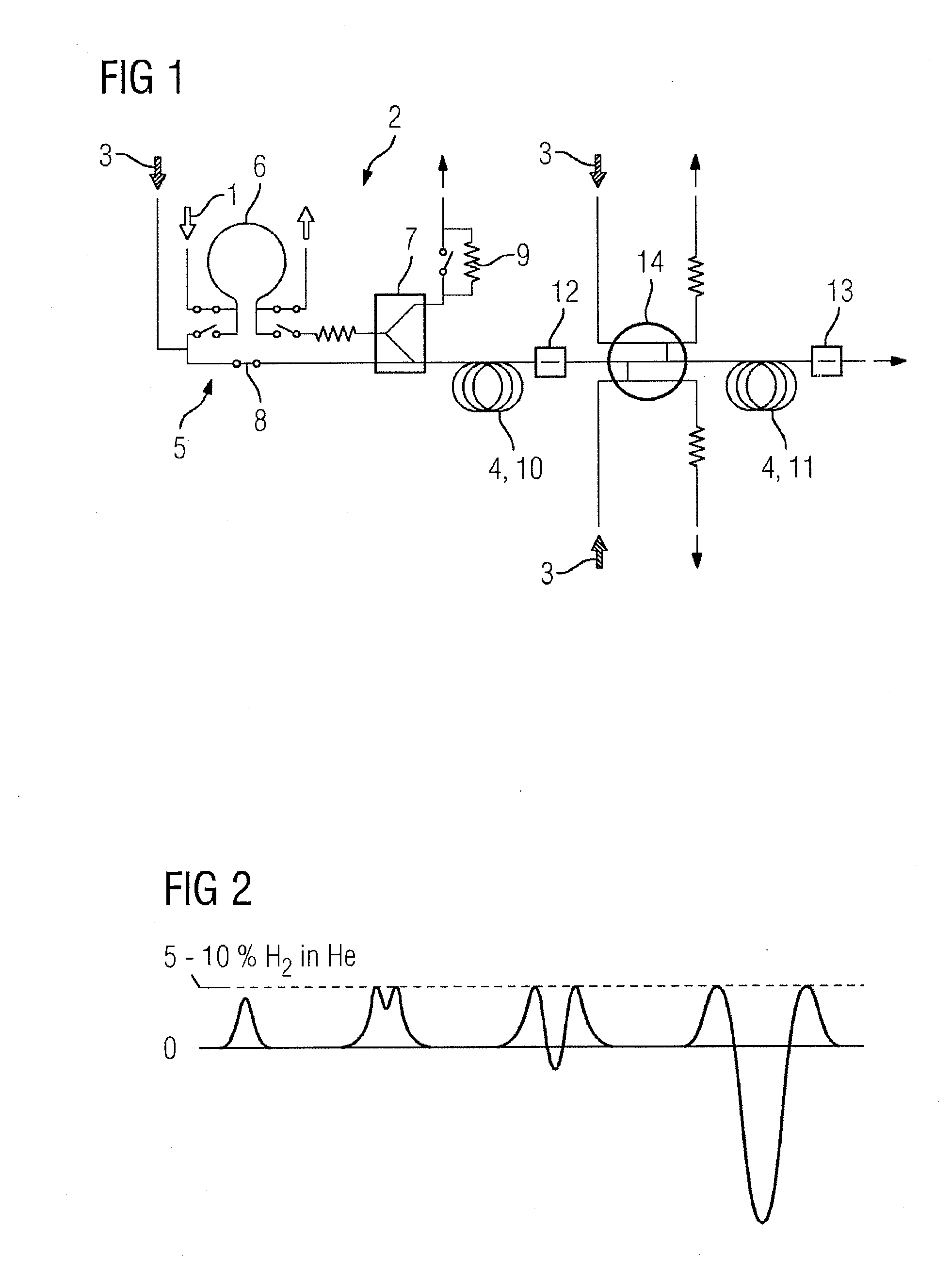Method for Chromatographic Analysis of a Hydrogen-Containing Gas Mixture
a technology of hydrogen-containing gas and chromatographic analysis, which is applied in the field of gas chromatography, can solve the problems of high cost of chromatographic analysis, unambiguous detection of hydrogen by helium as a carrier gas, and inability to produce a sufficiently high precision mixture, etc., and achieves high measurement error
- Summary
- Abstract
- Description
- Claims
- Application Information
AI Technical Summary
Benefits of technology
Problems solved by technology
Method used
Image
Examples
Embodiment Construction
[0023]In the gas chromatograph shown in a schematic illustration in FIG. 1, a gas mixture 1 to be analyzed is supplied to a dosing device 2 after withdrawal from a technical process. The dosing device 2 is used for the purpose of inwardly transferring at a predefined point in time a predefined dose of the gas mixture 1 in the form of a short and sharply delimited sample plug into a carrier gas flow 3 and feeding it to a separating device 4. The dosing device 2 has a dosing valve 5 which, in a first switch position shown here, conducts the gas mixture 1 into a sample loop 6. In a second switch position, the sample loop 6 is switched into the path of the carrier gas 3, which feeds the sample of the gas mixture 1, which is contained in the sample loop 6, to an injector 7. As long as a solenoid valve 8 is open, the carrier gas 3 flows through the solenoid valve 8 and the injector 7 into the separating device 4, while the sample is discharged outward from the sample loop 6 via a flow thr...
PUM
| Property | Measurement | Unit |
|---|---|---|
| concentrations | aaaaa | aaaaa |
| concentration | aaaaa | aaaaa |
| thermal conductivity detector | aaaaa | aaaaa |
Abstract
Description
Claims
Application Information
 Login to View More
Login to View More - R&D
- Intellectual Property
- Life Sciences
- Materials
- Tech Scout
- Unparalleled Data Quality
- Higher Quality Content
- 60% Fewer Hallucinations
Browse by: Latest US Patents, China's latest patents, Technical Efficacy Thesaurus, Application Domain, Technology Topic, Popular Technical Reports.
© 2025 PatSnap. All rights reserved.Legal|Privacy policy|Modern Slavery Act Transparency Statement|Sitemap|About US| Contact US: help@patsnap.com



